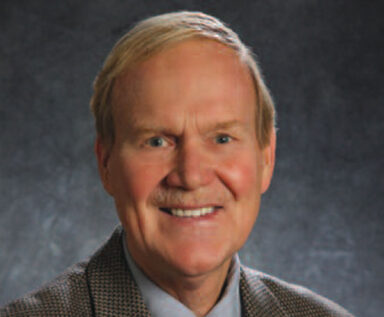Polio: A Physician’s Perspective
- By Trudie Mitschang

DR. FREDERICK M. MAYNARD is a recently retired physiatrist (a specialist in physical medicine and rehabilitation) who has dedicated a significant portion of his academic and clinical practice over the last 25 years to the unique problems of polio survivors. He is also a board member of Post Polio Health International (PPHI), whose mission is to enhance the lives and independence of polio survivors through education, advocacy, research and networking.
BSTQ: What is post-polio syndrome (PPS)?
Dr. Maynard: PPS is a name given to a group of common new symptoms that are experienced in polio survivors, typically characterized by new pain, weakness and fatigue, but the definitive symptom is new weakness. The critical piece is that this new weakness is out of proportion of what you’d expect from growing older. It’s important to note that PPS is not the same condition as post-polio sequelae (the late effects of polio). PPS is usually considered a specific new condition. Depending on which study you reference, between 25 percent and 40 percent of polio survivors experience PPS, while as many as 70 percent of polio survivors are said to have post-polio sequelae. It’s been difficult for the medical profession as a whole to get their hands around this. Some want to put this label on every polio survivor, while there are others who say it does not exist.
BSTQ: How is PPHI working to educate the medical community about PPS?
Dr. Maynard: The effort to educate has been ongoing, and our focus now is on working with Internet sites. A lot of young physicians are not familiar with polio, and many use the Internet as a research tool. Unfortunately, there is a lot of misinformation out there, so as representatives of the greater polio community, we are trying to improve the accuracy of existing content.
BSTQ: Are there lessons to be learned from PPS that could apply to other diseases?
Dr. Maynard: Absolutely! Polio is an old, though not totally eradicated, viral problem that has shown it has the potential to mutate. If we can better understand the late ramifications of having had a severe viral infection like polio, we can better understand the long-term ramifications of modern viruses like Ebola. As we study PPS patients, we need to study the triggers that may cause non-contagious virus fragments in the nervous system to suddenly become pathogenic.
BSTQ: Are there any interesting studies underway?
Dr. Maynard: People with PPS frequently have difficulty finding ways to exercise without worsening symptoms or overexerting muscles. Whole body vibration (WBV) is a way to exercise that causes muscle contractions through stimulation of reflexes. A recent study looked at the feasibility of WBV as a means of weight-bearing exercise in people with PPS by assessing its effects on walking speed and endurance. Another highly discussed treatment for polio survivors is the use of intravenous immune globulin (IVIG). A multi-center, multi-country study is currently underway to assess the effectiveness of IVIG treatment for patients with PPS symptoms. Principal investigators believe the study holds promise because it’s the first to examine the long-term effects of a drug like IVIG in post-polio patients. IVIG has been successfully used to modify the immune system when treating many different autoimmune neuromuscular diseases. Even though PPS is not an immune disease, a number of immune factors do seem to play a role.
BSTQ: What is the current prognosis for patients with PPS?
Dr. Maynard: My own work has focused on rehabilitation. Our aging polio survivors are largely dealing with aging disorders such as pain and not being able to function like they used to. We’ve found there’s a lot you can do about that. We use a holistic approach emphasizing sleep, nutrition and exercise at the right dosage to control symptoms and lead to improvement. We’ve done residential treatment retreats where we take a week to work on these issues with our patients, and results have been promising.